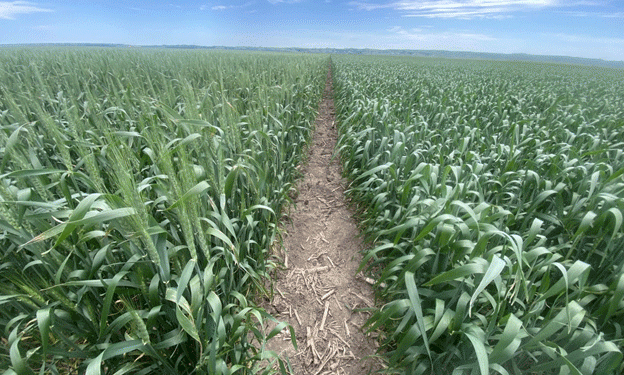It’s a constant struggle for farmers to get their work done within the tight windows provided by Mother Nature. Depending on the local weather patterns, farmers adhering to regenerative agriculture practices can face additional hurdles in their race against the weather and poor field conditions. Thankfully, advancements such as dormant seeding—planting seeds in winter to sprout in spring—are helping to overcome these challenges and maintain productivity.
Dwyane Beck, a South Dakota State University professor emeritus of agronomy and manager of the Dakota Lakes Research Farm, has been pioneering the use of dormant seeding for decades. According to Beck, winter wheat often doesn’t perform well when planted after soybeans, due to the limited planting window and poor establishment conditions. Dormant seeding allows for planting spring wheat in November, which then remains dormant until conditions warm in the spring. This method provides a head start, as the seeds are already in the ground and ready to germinate when the soil thaws.
Recent data from the Dakota Lakes Research Farm show that dormant seeded spring wheat often yields the same or better than spring-seeded spring wheat. Over the past several years, Beck’s team has demonstrated that this method not only simplifies the planting process but also helps in managing the workload. “The biggest advantage is the ability to manage workload,” Beck noted. “We do dormant seeding to take the pressure off getting other crops like canola, peas, lentils, and flax planted in a timely manner.”
The practice of dormant seeding has allowed farmers to spread out their workload. “We’re often seeding wheat in very early winter—before Thanksgiving,” Beck said. “We joke that Black Friday is the ideal time because it frees up time in the spring when everyone is busy with other tasks.” Beck has even planted into frozen ground with success, noting that if the ground is dry, the seeding process is manageable.
To make this work, Beck emphasized a few key practices. The seeder needs to be low disturbance with good residue management, as this helps in maintaining soil health. “We think you need to put the fertilizer down with the seed,” Beck said. “Phosphorus and potassium starter fertilizers are beneficial, but not nitrogen, and it needs to be at the same depth as normal seeding.”
Despite the challenges—like short days and cold nights when reassembling and running equipment—dormant seeding offers an opportunity to get spring wheat in the ground early, reducing the spring workload. “If you’re going to do this, you need to plan and be prepared,” Beck concluded. “The biggest thing is getting it done. Farmers are just so busy in the spring.”
Dormant seeding represents a practical solution for managing crop rotations and workload, especially in regions with challenging weather patterns. By planting wheat in the winter, farmers can take advantage of improved seed-soil contact and better growth conditions in the spring. This method not only ensures timely planting but also contributes to increased biodiversity in crop rotations, which is crucial for sustainable agriculture.
Error





